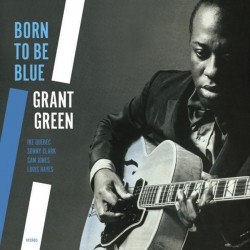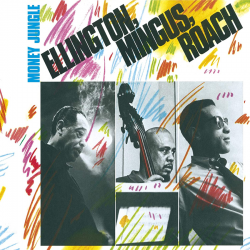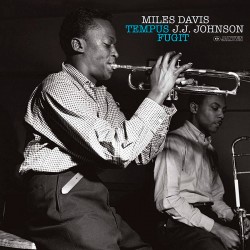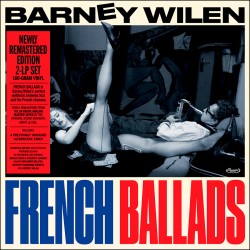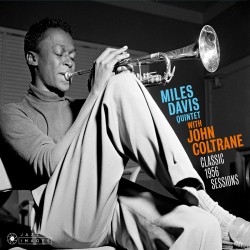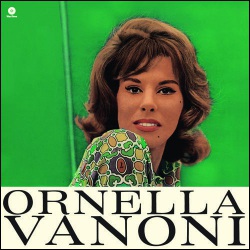Clifford Brown
Get Happy W/ J.J. Johnson (37127)
 View larger
View larger
- Remove this product from my favorite's list.
- Add this product to my list of favorites.
Get Happy W/ J.J. Johnson
Clifford Brown
Jazz Images
8436569193273
LPS 156119
37127
JAZZ
1
4 STARS PENGUIN GUIDE TO JAZZ
INCLUDES 1 BONUS TRACK
The great Clifford Brown only recorded on one occasion with be-bebop trombone pioneer J. J. Johnson. At the time of the 1953 recording session, Johnson had withdrawn from full-time playing to work as a blueprint inspector. The date took place in New York on June 22, 1953. The master takes were originally released as part of Blue Note’s 10-inch Modern Jazz 5000 Series on BLP 5028, entitled Jay Jay Johnson with Clifford Brown. When reissued in Blue Note’s 12-inch 1500 series of LPs, tracks from the original 1953 recording session were spread over two albums and combined with tracks from a later date producing The Eminent Jay Jay Johnson, Volume 1 (BLP 1505) and The Eminent Jay Jay Johnson, Volume 2 (BLP 1506). Such an early issue of alternate takes on the second volume, which appeared in 1956, was due to the fact that Clifford Brown had died in a car accident on June 26 of that year at the age of 25, making every recorded document of his trumpet a thing of great value.
PERSONNEL:
- CLIFFORD BROWN, trumpet
- JAY JAY JOHNSON, trombone
- JIMMY HEATH, tenor & baritone sax
- JOHN LEWIS, piano
- PERCY HEATH, bass
- KENNY CLARKE, drums.
WOR Studio, New York City, June 22, 1953.
(*) BONUS TRACKS:
- CLIFFORD BROWN, trumpet; HENRI RENAUD, piano;
- PIERRE MICHELOT, bass; BENNY BENNETT, drums.
- Paris, France, October 15, 1953..
SIDE A:
- 01 GET HAPPY
- 02 LOVER MAN
- 03 ISLE OF CAPRI
- 04 SKETCH 1
- 05 TURNPIKE
SIDE B:
- 01 IT COULD HAPPEN TO YOU
- 02 ISLE OF CAPRI [alternative take]
- 03 TURNPIKE [alternative take]
- 04 COME RAIN OR COME SHINE *
- 05 IT MIGHT AS WELL BE SPRING
One of the most renowned jazz photographers of all time, Francis Wolff (1907-1971) was also a record company executive and producer, whose skills were essential to the success of the Blue Note record label. Born Jakob Franz Wolff in Berlin, Germany, he soon became a jazz enthusiast, despite the government ban placed on this type of music after 1933. A Jew, in 1939 he left Berlin, where hehad worked as a commercial photographer, and established himself in New York. He began working there with his childhood friend Alfred Lion, who had co-founded Blue Note Records with Max Margulis. The latter soon dropped out of any involvement in the company, and Wolff joined Lion in running it. Wolff took thousands of photographs during the label’s recording sessions and rehearsals. His highly personal visual concept would be forever associated with both Blue Note and jazz as a whole.



